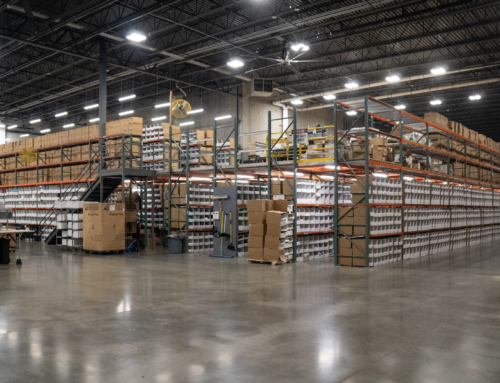The rise in eCommerce popularity and online shopping, especially during the COVID-19 pandemic, has forced businesses to reassess and optimize key customer protocols like Returns. In this day and age, 48% of online shoppers say they returned an online order in the last 12 months, yielding billions of dollars in losses.
A smart returns management blueprint designed to combat customer pain points and potential losses is imperative to sustainable growth. Mastering eCommerce returns may be tedious, however, the strategic opportunity to attend to and build memorable customer experiences that increase loyalty is worth the effort. The entire process can offer valuable insights, an opportunity to collect customer feedback and optimize outdated internal processes. Understandably, the returns management process should receive the attention it deserves.
So what is a returns management process?
A returns management process is a mechanism designed to manage product returns for your online store. From equal product exchanges to full refunds, understanding how to best handle returns greatly impacts other vital aspects of the supply chain like inventory management, shipping costs, and profitability. Not to mention, the way returns are handled is often how your name and company are perceived by end customers.
Understanding the returns management process
The returns management process, commonly known as “reverse logistics”, centers around customers shipping products back to you. In most cases, the process follows three simple steps which can be streamlined based on the customer and business needs.
Step 1: A customer initiates a return
The first step is for the customer to begin the return process, guided by clearly outlined instructions that are often included in the physical shipment packaging or an online policy. Through this, the customer has an opportunity to give some context as to why they are making the return. As a smart business, including a survey or method for collecting feedback, can help you focus on preventable trends patterned through the data insights.
Step 2: The returned product is received
Next, a customer sends the item to a predetermined location like a fulfillment center, retail location, or eCommerce warehouse. The team or individual in charge of returns will decide what to do with the product whether it be: restocked, repaired, recycled, quarantined, or donated.
Step 3: The return is processed
Once the item is received, it’s important that whatever refund a customer qualifies for is issued promptly so the process moves as quickly as possible. If the customer requested an exchange, ship out the updated item asap. If the item returned is applicable for resale, mark it as available inventory to not lose out on a potential sale.
Controllable returns vs. uncontrollable returns
No matter your responsibility or job position, understanding the factors that cause customers to return items, guides informed decisions that work to resolve those very issues. Hone in on preventable factors like product defects, inadequate packaging, and unclear instructions that lead to misinformed purchases.
Other times, uncontrollable variables will arise like serial returning, — when a customer orders the wrong size or purchases multiple of the same item to return what they don’t want. Uncontrollable returns tend to increase during the holiday season when people buy gifts for others with an accompanying gift receipt. More than 5 million packages are returned to retailers in the first week of January, so bolstering your return protocols for the holiday shopping season is well worth the effort.
Why can returns make or break your business?
Believe it or not, sales and customer loyalty are two of the most influenced factors by returns.
- 92% of shoppers say return and purchase if the returns process was easy
- 79% of consumers expect free return shipping, and 49% of online retailers offer it
- More than 60% of consumers review a return policy before making a purchase
The bottom line is that returns are a major step in the online shopping experience and customer journey. Given the distanced and sometimes impersonal virtual nature of eCommerce shopping, optimizing customer-facing touchpoints like returns management helps to shape the overall perception of your brand, whether that be negative or positive is up to you!
How to proactively reduce returns and stay profitable with your return management process?
Enhance customer service: Following up and collecting feedback from unsatisfied customers can increase brand loyalty and make connections. Listen and report on common problems while offering discount codes or other product recommendations to incentivize customers.
Invest in inventory management: Ensure your inventory management system has real-time capabilities to re-add saleable merchandise back in stock. A custom inventory management software like Driveline powered by Deposco means that you can monitor and update inventory in real-time.
Educate your staff: If you have employees charged with managing returns, work with them to make the process as efficient as possible. For example, if an item is continually damaged in transit, it might be time to come up with a new and innovative packaging solution to resolve the issue. In every case, proactive employees working efficiently is the goal. They are always the most likely to find trends in commonly returned items and work to resolve those issues.
Include a clear return policy on your website: Transparency, especially when it comes to returns can help avoid a world of conflict and headache. 58% of customers say they want a hassle-free return policy. Having a visible and clearly outlined Returns section of your website sets expectations with customers so everyone is on the same page and aware of the protocol. Be honest and upfront with instructions, expectations, costs (if any), replacement items, store credits, and delivery times once products are returned.
Create clear product descriptions: Again, clarity and ease are key to online shopping. The large majority of shoppers say that detailed product content or descriptions are a major factor in their purchasing decisions. Reliable up-front product information decreases returns and levels expectations with customers so everyone is excited and aware of what they purchased.
Increase return time window: While every return policy may allow a variable amount of days to return an item, being more lenient with return time limits (a 60-day vs. 30-day policy) can decrease returns by creating less urgency around returns for the customer. A customer could very well come to love an item they unexpectedly received.
Ecommerce return policy template
There is no one-size-fits-all return policy, but the following eCommerce return policy template should be enough to get you started. Everything in brackets is customizable to fit your brand. If you have more specific requirements for returns, such as only accepting damaged products or requiring merchant authorization, state those clearly throughout the policy.
Returns
Thank you for shopping with [Business Name]. If you are not satisfied with your purchase, you have [X] days from your order date to make a return. To be eligible for a return, an item must be unused and in the same condition that you received it. Your return [needs/does not need] to include the original packing slip to be accepted.
Shipping
You [will/will not] be responsible for covering return shipping costs. To print a return shipping label, please [click here/email us/fill out the form below].
Refunds
You will receive a refund in the form of [a credit to your original payment method/a gift card] within [X] days of us receiving your return. Shipping costs for the original order [are/are not] refundable. The cost of return shipping [will/will not] be deducted from your refund.
Conclusion
As the eCommerce landscape continues to grow, so will the number and complexity of eCommerce returns. Prepare yourself today by partnering with a competent Fulfillment partner like Drive. With years of supply chain and logistical experience, innovative warehouse management software, and a skilled group of staff, the days of worrying about your outdated return management protocols are over. Get in touch for more information or to schedule a tour of our Utah-based Drive Fulfillment Centers today.






